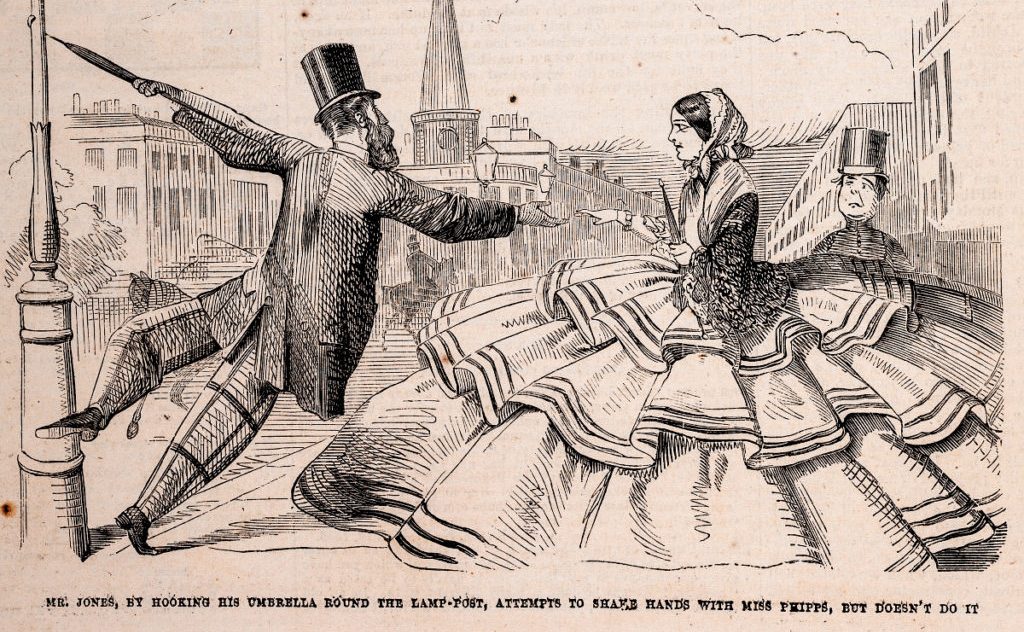Hey! Hey you! Are you a Gen Z’er looking for a hobby? How about one that’s stylish, sustainable, and allows you to unleash your inner wench? All you need are some curtains and a sewing machine!
For the uninitiated, History Bounding is the practice of emulating or recreating historical clothes for modern wear. This can be as simple as wearing a pleated skirt, or as far as a tudor court gown out to do one’s errands. Over the pandemic, I’ve taken to making my own clothes, with historical patterns from different eras as inspiration. Here are some reasons why I love it so much:
It makes me a better consumer:
According to some estimates, the average American buys upwards of 68 items of clothing a year. A significant percentage of that clothing will go unworn, much of it ending up in a landfill. There’s even a documented practice of shipping garments to the developing world, where they pile up to be burned. According to the EPA, America generates 17 million tons of textile waste annually.
The waste of clothing contributes not only to pollution but also carbon emissions and wage slavery. Fast fashion generates cheap products at a high volume through cheap synthetic textiles and exploitative labor practices. Synthetic textiles are not biodegrade, but they do break down, lasting for very little time and leaking plastics into the water supply. At every level of the major supply chain of clothing in America, there is abuse and environmental destruction. But these are industrial problems. What can an individual do?
Prior to the post WWII consumer boom, the average person owned fewer household items. Those objects one had were well made, and repeatedly repaired. Clothing in particular was expensive to produce, even after the advent of industrial textile manufacture. In general, (and I am speaking very generally) people owned fewer clothes and valued them more.
For me, History Bounding is about consumption as much as it is about aesthetics. I am learning to value the objects I live with and the labor that goes into their production more highly. In order to stop climate change, we need to not only buy sustainable products, but to buy less, and reuse things when possible.
It challenges the way I view history, and historical women:
We like to assume that because of the conveniences offered by modern technology, the objects we use everyday are superior, and by extension the objects of our ancestors were wholly impractical.
Period women’s clothing in particular, is characterized as frivolous and inconvenient. Sure it is, if you’re Marie Antoinette sandwiched between meter wide panniers. But the reality is that before and during early industrialization, a majority of the population still labored on farms, or performed other menial tasks. Their clothing had to be durable and practical.
But what about corsets! I hear you cry. Well, corsets allowed the wearer to distribute the weight of the layers of clothing worn at the time, and kept one warm before the advent of central heating. Furthermore, there’s evidence that supportive garments such as stays served a practical function, such as when professional lifters wear a belt to work out. If properly constructed, these garments can support the lower back, making manual labor easier.
Growing up, we’re taught that corsets are oppressive torture devices, and that aristocratic fashions were designed by men out of spite. In reality, extreme female fashions such as large skirts, protective hat pins, (please google this one) and elongated bonnets allowed women to reclaim physical space. These fashions were subject to the hatred of many men, as evidenced by extant political cartoons mocking them.
Traditionally, female labor has been devalued, and this extends to the perception of crafts and labor performed largely by women. When you learn a skill, you gain an understanding of the time, labor, and training that skill requires.
It’s fun and satisfying:
MHS has some practical classes. You can take Woodworking or Cooking. But what self respecting high-school nowadays offers Home Ec? Indeed, where in our lives are we taught the practical skills related to maintaining a home and repairing everyday objects?
Booksmarts aren’t the only kind of intelligence. My Grammie can knit a sweater from scratch. My dad has a masters in Bioinformatics, but he can also fix all sorts of household appliances. Guess which skillset gets more use around the house.
This is not to say that academic learning isn’t important or useful, but practical skills are so undervalued in our education. It feels good to make something with my hands. It feels good to use something that I made every day.
Sewing is calming. There’s a rhythm to making a seam. I can watch a show while I pin a row of pleats. I can listen to music. Not only does the end product make me feel fancy, but ladies, I have pockets!
So, do you have a clothing swap bridesmaid’s dress and a ripped bedsheet lying around your home? Make a big ol’ skirt with some big ol’ pockets. Of course, not everyone exults in dressing like Baba Yaga, but the lessons of period clothing can apply to modern sewing and modern habits. Learn to fix the things you have. Turn them into things you want. Be a (sus)tainable bog witch!

